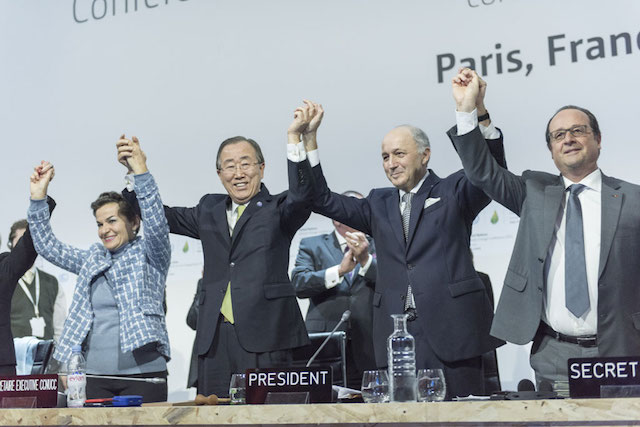Are countries' climate commitments real? What Paris Pledges Reveal
As the world grapples with tackling climate change, countries outline their commitments under the Paris Agreement in Nationally Determined Contributions (NDCs). While these documents are often scrutinized for their emissions targets, new research involving researchers from ICTA-UAB and the ESCP Business School suggests they contain much more—revealing a country’s broader priorities, challenges, and approaches to sustainability.

ICTA-UAB researchers Ivan Savin, Lewis King y Jeroen van den Bergh analyzed over 300 NDCs submitted by nations worldwide.
Results show that wealthier nations, such as the US, UK, and EU, tend to focus on emission reduction targets. Their pledges emphasize numbers, but often lack detailed roadmaps on policies or regulatory measures to achieve these goals. In contrast, developing nations often take a broader approach, embedding climate policy within sustainable development goals. Their NDCs highlight economic growth, social justice, and adaptation to climate impacts alongside mitigation. Many emphasize that they need financial and technological support from wealthier nations to meet their commitments.
How Have Climate Pledges Changed Over Time?
The study also tracks how countries’ NDCs have evolved. Early NDCs were often broad statements of intent, focusing on general commitments rather than concrete actions. More recent updates tend to be more detailed, with some countries breaking down mitigation strategies by sector such as energy, agriculture, and transportation. However, transparency remains an issue—many pledges still lack detail specifics on how governments plan to finance or implement their climate goals, leaving uncertainty about whether these pledges will translate into real-world process.
Which Countries Share Similar Priorities?
The researchers identified nine distinct clusters of countries with similar approaches to their climate pledges. Figure 1 below illustrates nine distinct groups of countries with similar approaches to climate action.
Figure 1. Clusters of parties to the Paris Agreement and topic prevalences.
One cluster, including Canada, UK, and Australia primarily focuses on mitigation targets but providing little detail on policy measures. Another, including Brazil, Russia, and other former Soviet states emphasize the implications of climate action on economic development. Meanwhile, Small Island Developing States (SIDS), which are highly vulnerable to the impacts of climate change, highlight adaptation and the need for international support. These clusters highlight the complex trade-offs that countries face in balancing emissions reduction with economic and social priorities.
One major challenge assessing climate action is a lack of a standardized format when comparing NDCs. Some countries provide highly structured, detailed reports, while others submit only brief summaries. Since each country submits its NDC in its own format, it is difficult to assess which policies are effective and how much progress is actually being made. A common reporting format could allow for better comparison of climate commitments between countries and increase their transparency.
As the world moves toward the next round of global climate negotiations, this study underscores the need for clearer, more comparable, and more accountable climate commitments. Without these, the goals of the Paris Agreement may remain only on paper.
Savin, I., King, L.C. & van den Bergh, J. Analysing content of Paris climate pledges with computational linguistics. Nat Sustain (2025). https://doi.org/10.1038/s41893-024-01504-6